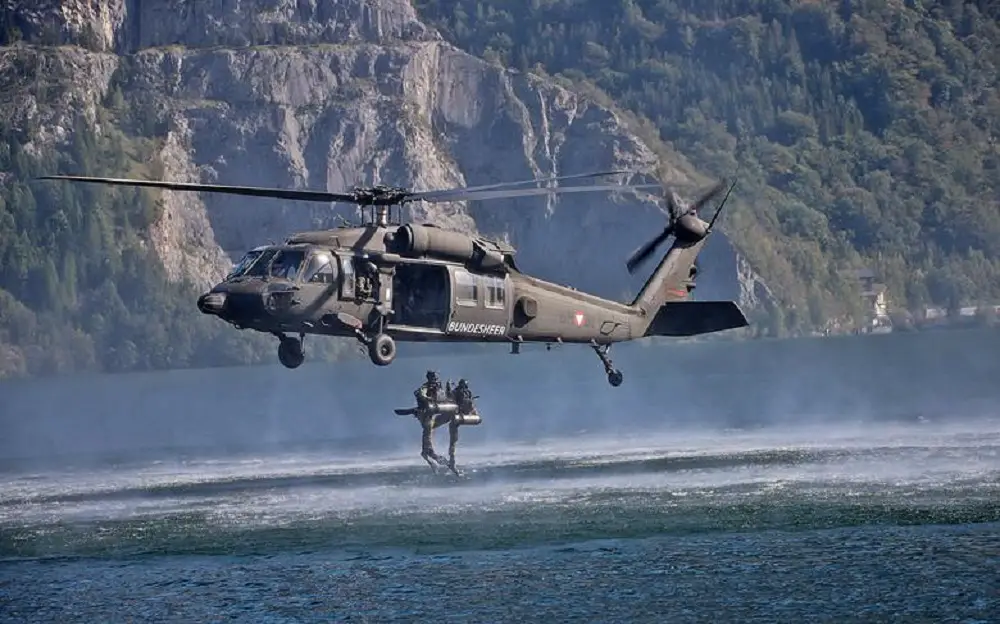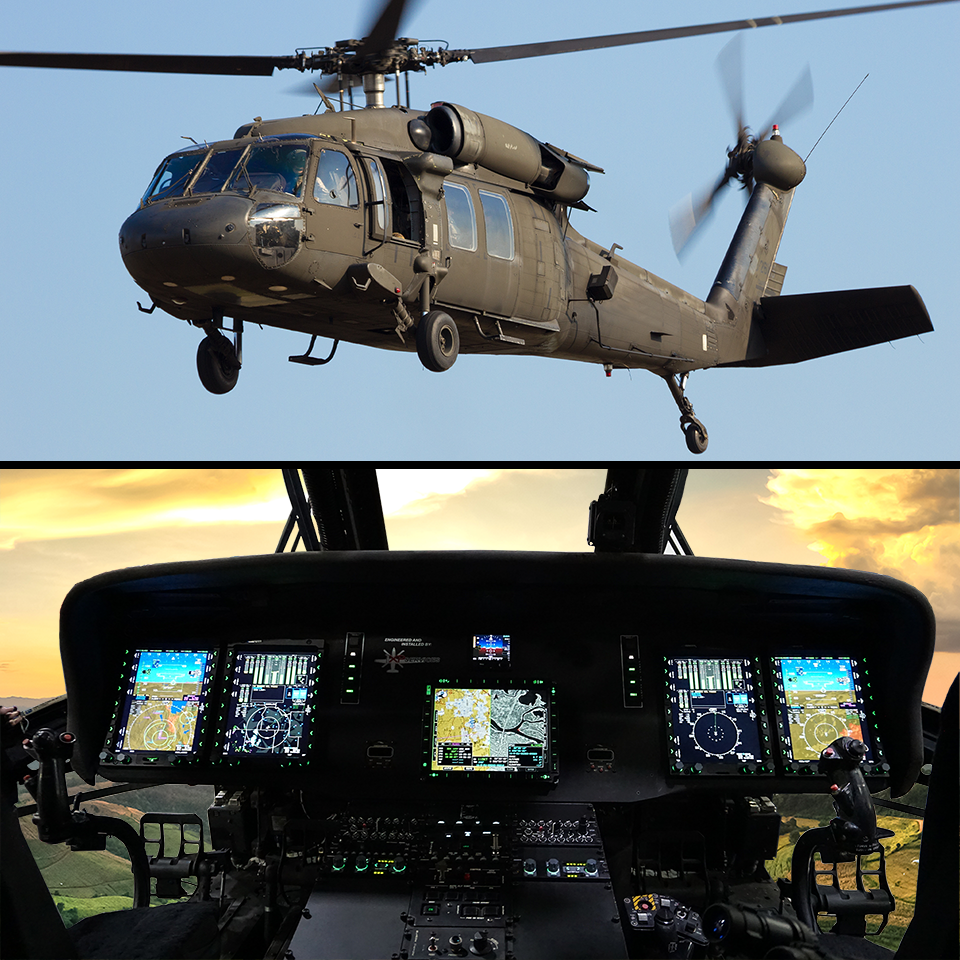UH 60 Black Hawk: A Close Look at Its Engineering, Performance, and Tactical Uses
UH 60 Black Hawk: A Close Look at Its Engineering, Performance, and Tactical Uses
Blog Article
Exploring the Background and Development of the UH 60 Helicopter

Beginnings of the UH-60
The beginnings of the UH-60 helicopter can be traced back to the late 1960s, a period marked by the need for a versatile utility aircraft that can adjust to the progressing needs of modern-day war. The U.S. Army acknowledged the need for a substitute for the older UH-1 Iroquois, which was becoming increasingly inadequate for the complexities of contemporary battle circumstances. In 1967, the Military launched the Utility Tactical Transport Airplane System (UTTAS) program, which sought to develop a multi-role helicopter with the ability of numerous objectives, including troop transport, medical evacuation, and logistical support.
The layout competition brought in numerous aerospace suppliers, however it was Sikorsky Airplane Company that eventually protected the agreement in 1972. The UH-60 Black Hawk was introduced, showcasing cutting-edge layout aspects and advanced innovation that set it aside from its predecessors. Its first flight happened in 1974, and the aircraft was formally adopted by the Military in 1979. The UH-60 rapidly acquired recognition for its durable performance, reliability, and adaptability, leading the way for its comprehensive use in army procedures and solidifying its standing as a keystone of U.S. Military aeronautics.
Secret Style Features
Cutting-edge style attributes of the UH-60 Black Hawk dramatically add to its functional effectiveness. Among one of the most remarkable elements is its twin-engine configuration, which improves dependability and gives a higher power-to-weight proportion, making it possible for the helicopter to execute under different problems. The airplane's four-blade main blades system provides boosted lift and maneuverability, crucial for tactical goals.

Additionally, the cabin is made for optimum exposure and ergonomics, including advanced avionics that enhance pilot operations. The modular style of the UH-60 permits very easy upkeep and adaptability, making it ideal for various objective profiles, from army transport to medevac operations. These key style functions ensure that the UH-60 Black Hawk stays a versatile and trusted property in military air travel, efficient in meeting the needs of modern-day warfare.
Technological Developments
Recent technical developments in the UH-60 Black Hawk have actually substantially boosted its operational abilities and convenience. The integration of advanced avionics, such as electronic trip control systems and enhanced situational understanding screens, enables pilots to run with increased precision and effectiveness. These systems assist in enhanced navigating, interaction, and data sharing, allowing the helicopter to operate successfully in varied settings.
Additionally, the introduction of composite materials has minimized the total weight of the airplane while keeping architectural integrity. This reduction enhances fuel performance and expands operational variety. The consolidation of innovative blades technology, consisting of using four-blade, totally verbalized rotor systems, has enhanced lift performance and maneuverability, enabling better handling in different flight conditions.

Additionally, developments in propulsion systems, such as the T700-GE-701D engines, have increased power site result and reliability - uh 60. These engines add to superior efficiency in hot-weather and high-altitude problems
Last but not least, the assimilation of self-defense systems and enhanced sensor packages boosts the Black Hawk's survivability and mission efficiency. Collectively, these technical enhancements make certain that the UH-60 Black Hawk stays a crucial possession in modern aeronautics, qualified of adjusting to the developing demands of humanitarian and army goals.
Function in Military Procedures
As the foundation of united state Military air travel, the UH-60 helicopter plays an essential function in various armed forces operations, serving as a functional platform for combat assistance, transport, and medevac missions - uh 60. Its layout integrates the capability to run in varied environments, making it essential for army movement and logistical support in both traditional and unconventional warfare

In clinical emptying scenarios, the UH-60 has actually proven important, considerably reducing the moment to move wounded soldiers from the combat zone to clinical facilities. Its advanced avionics and evening vision capacities better make sure mission success under tough conditions. Overall, the UH-60 helicopter continues to be an essential possession, continuously adapting to meet the advancing needs of military procedures and improving the effectiveness of united state forces worldwide.
Future of the UH-60
Looking in advance, the future of the UH-60 helicopter includes significant innovations in technology and capacities developed to boost its functional effectiveness. As armed forces operations progress, the UH-60 is anticipated to integrate innovative modern technologies, consisting of enhanced avionics, enhanced tools systems, and advanced interaction tools. These enhancements will certainly allow for better situational understanding and mission versatility, making certain that the UH-60 stays an essential possession on the battlefield.
One significant growth is the integration of fly-by-wire systems, which will boost flight control accuracy and lower pilot workload. Initiatives to update the airframe and engines intend to enhance payload, range, and rate ability, therefore broadening the helicopter's operational extent.
The future additionally holds promise for boosted interoperability with unmanned aerial systems (UAS), allowing collaborated goals that leverage both manned and unmanned abilities. Furthermore, the consolidation of man-made knowledge and maker learning could optimize trip characteristics and upkeep processes, leading to reduced see it here functional prices.
Final Thought
The UH-60 Black Hawk helicopter stands for a substantial success in armed forces air travel, developing from the U.S. Military's first demands for a content flexible energy aircraft. Its innovative design attributes and constant technological improvements have actually guaranteed its significance in numerous army procedures over the decades. As the needs of modern-day warfare adjustment, the future of the UH-60 will likely involve further improvements and adaptations, reinforcing its status as an essential possession for armed pressures worldwide.
The UH-60 Black Hawk helicopter represents a considerable landmark in military air travel, emerging from the U.S. Army's pursuit for a much more reputable and versatile utility airplane in the late 20th century.The origins of the UH-60 helicopter can be traced back to the late 1960s, a duration marked by the demand for a flexible energy airplane that could adjust to the progressing demands of contemporary war. Generally, the UH-60 helicopter remains a crucial asset, constantly adjusting to meet the developing needs of armed forces operations and improving the performance of U.S. pressures worldwide.
Looking ahead, the future of the UH-60 helicopter includes significant innovations in technology and capacities designed to enhance its functional effectiveness.The UH-60 Black Hawk helicopter represents a substantial achievement in armed forces air travel, evolving from the U.S. Military's first needs for a flexible utility aircraft.
Report this page